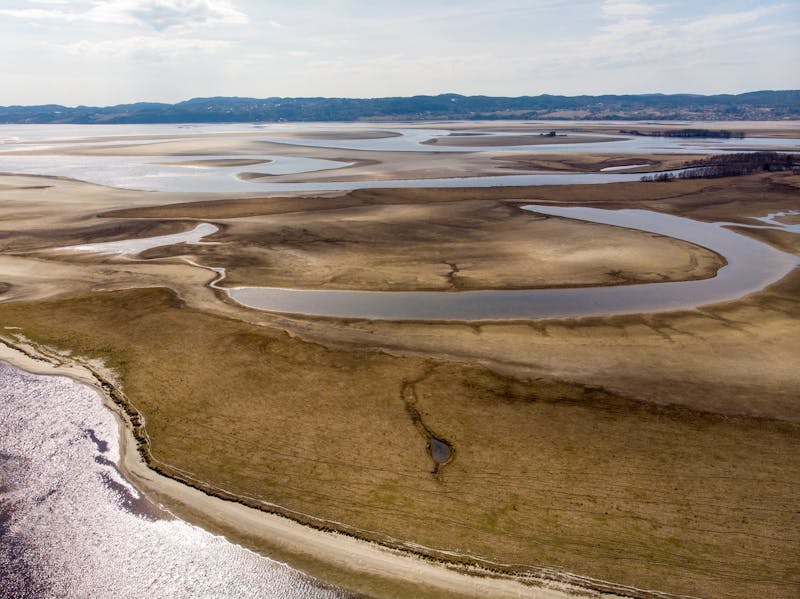
America is in a water crisis. This year, in June, the Biden-Harris Administration awarded $4.9 million to advance drought monitoring and prediction in the country.
Further, UNEP’s recent feature revealed that two of the largest reservoirs—Lake Powell, in Utah and Arizona, and Lake Mead, in Nevada and Arizona—are at risk of reaching ‘dead pool status.’ These reservoirs provide electricity and water to millions of Americans. Experts blame the overconsumption of water and the climate crisis for this.
If Americans don’t act now, some sections of the country could run out of clean water sometime in the future. That sounds scary, doesn’t it?
The good thing, however, is that the issue can be tackled head-on. There are steps that everyone can take to turn things around. We’ll discuss them here.
Leaky pipes are a big deal. It’s not just about the dripping taps at home, though. In some cities, old, leaky pipes in the water infrastructure are letting massive amounts of treated water go to waste.
A staggering 2.1 trillion gallons of treated drinking water is lost yearly due to leaky pipes and water mains in the U.S.
Fixing those leaks is important since it can help conserve water. How can you do that?
EPA advises checking for leaks regularly. According to the agency, 10,000 gallons of water alone account for household leaks on average. Taking a look at your water usage every month, especially during the colder months, can help pinpoint serious leaks.
You must also check your water meter before and after 2 hours when water is not used. There is a leak if the meter changes.
Businesses, on the other hand, can check whether there is a leak by turning off the water meter and water-using devices. Check the dial of the water meter. If it moves, you most likely have a leak.
Don’t delay fixing a leak. Plumbing putty can help patch and repair leaking pipes. But it won’t be of much help if the infrastructure is old. In that case, replacing the leaky pipe would be wise.
The ocean is basically one giant water tank. But the problem is that it isn’t fit for drinking because of the high salt concentration. Too much salt can be deadly for humans.
Desalination can turn seawater into drinking water, however. This process, BBC Bitesize explains, removes salt from seawater, which makes it safe to use and drink. About 1% of the water of the world is desalinated, informs Smart Water Magazine.
States must consider installing desalination plants. Corpus Christi, in Texas, is an example. It has a desalination plant to remove salt from seawater.
The process, however, consumes high energy, so it can contribute to greenhouse gas emissions. On top of that, desalination is expensive due to the high costs of building and operating desalination plants.
According to scientists, the atmosphere has six times more water compared to fresh water in rivers. This untapped resource has immense potential, and technology is stepping up to make water harvesting from the atmosphere accessible.
Solutions like atmospheric water harvesting extract moisture from the air and condense it into drinkable water, functioning even in arid regions.
As AWH technology can operate entirely off-grid—without the supply of electricity, it can be applied in various settings, including agriculture and irrigation. For instance, it can provide sustainable water generation and supply solutions while also regenerating vegetation in areas affected by desertification.
One of the significant benefits of AWH in agricultural and industry settings is that it can function in environments with extremely low humidity, such as deserts, notes Atoco.
Another plus point? This technology is scalable. It can fit any use case, from hand-held devices to large-scale solutions.
Water recycling programs are on the rise—after all, water isn’t single-use.
Greywater—the slightly dirty water from your sinks, showers, or washing machines—can be reused for things like flushing toilets or watering plants. Of course, it is treated before reuse.
The U.S. Department of the Interior informs that the Biden-Harris administration will invest $125 million in large-scale water recycling projects in Utah and California.
Some states have already embraced large-scale water recycling programs. Texas’ Wichita Falls and Big Springs, Arizona, and San Francisco are at the forefront of the movement. Other states, such as Colorado, California, and Florida, are in the process of formulating regulations to legalize it, too.
Industries are taking things up a notch by recycling wastewater on a much larger scale. ABC7 News revealed that the oil and gas industry is trying to recycle as much water as possible to reduce demand on the Ogallala Aquifer.
The bottom line is that America’s water crisis is real and worrisome. All hope is not lost, however. The right actions—like fixing leaks, exploring desalination, and atmospheric water harvesting—can help turn the tide.
Starting now is the key. Together, the world can make sure there is enough water to go around for years to come.